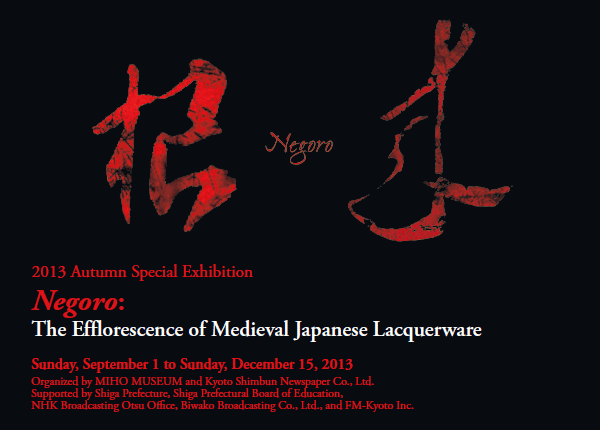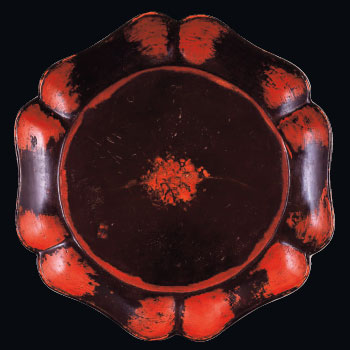
The world-renowned Japanese film director Akira Kurosawa
(1910–1998) treasured negoro lacquerware and was an avid collector
of this art form. He had replicas of Muromachi-period (1333–1573)
negoro pieces authentically produced for a banquet scene in his film
Throne of Blood. He also used a ritual sake bottle (heishi) from his
own collection as a symbolic centerpiece in the climax of the film.
Negoro originally referred to red-lacquered utensils and receptacles used in Shinto shrines and Buddhist temples in medieval Japan. With time, these objects naturally cracked, got scratched or damaged and the red lacquer wore away with long years of use, exposing the black lacquer base. This effect brought out the beauty of these works all the more.
The current exhibition, which has been curated by the foremost researcher of negoro, Sadamu Kawada, presents over four hundred outstanding examples of this type of lacquerware and introduces their allure. We hope museum visitors will enjoy the beauty of the crimson and black negoro as well as their elegant and practical form.
Negoro originally referred to red-lacquered utensils and receptacles used in Shinto shrines and Buddhist temples in medieval Japan. With time, these objects naturally cracked, got scratched or damaged and the red lacquer wore away with long years of use, exposing the black lacquer base. This effect brought out the beauty of these works all the more.
The current exhibition, which has been curated by the foremost researcher of negoro, Sadamu Kawada, presents over four hundred outstanding examples of this type of lacquerware and introduces their allure. We hope museum visitors will enjoy the beauty of the crimson and black negoro as well as their elegant and practical form.
D. 20.0 cm, H. 3.3 cm
Kitamura Museum (formerly owned by Akira Kurosawa)
Kitamura Museum (formerly owned by Akira Kurosawa)
During the Kamakura period (1185–1333), many objects were introduced
to Japan from China along with Zen (Ch. Chan) Buddhism. This
flower-shaped lobed tray in red lacquer is thought to have been a
copy of lobed ceramic and lacquer ware from among the early objects
imported from China. The creative sensibility of Japanese artisans
resulted in a large variety of flower-shaped trays and dishes in an
age when things Chinese were greatly prized. However, did the early
Japanese anticipate the tasteful combination of red and black that
we today appreciate as negoro?
The film director Akira Kurosawa loved this lobed tray. Could the
existing red lacquer have been intentional or coincidental ? Some
may wonder what Kurosawa thought of this exquisite piece, which
stands out even among its negoro counterparts.

(*Works will be rotated during the exhibition.)